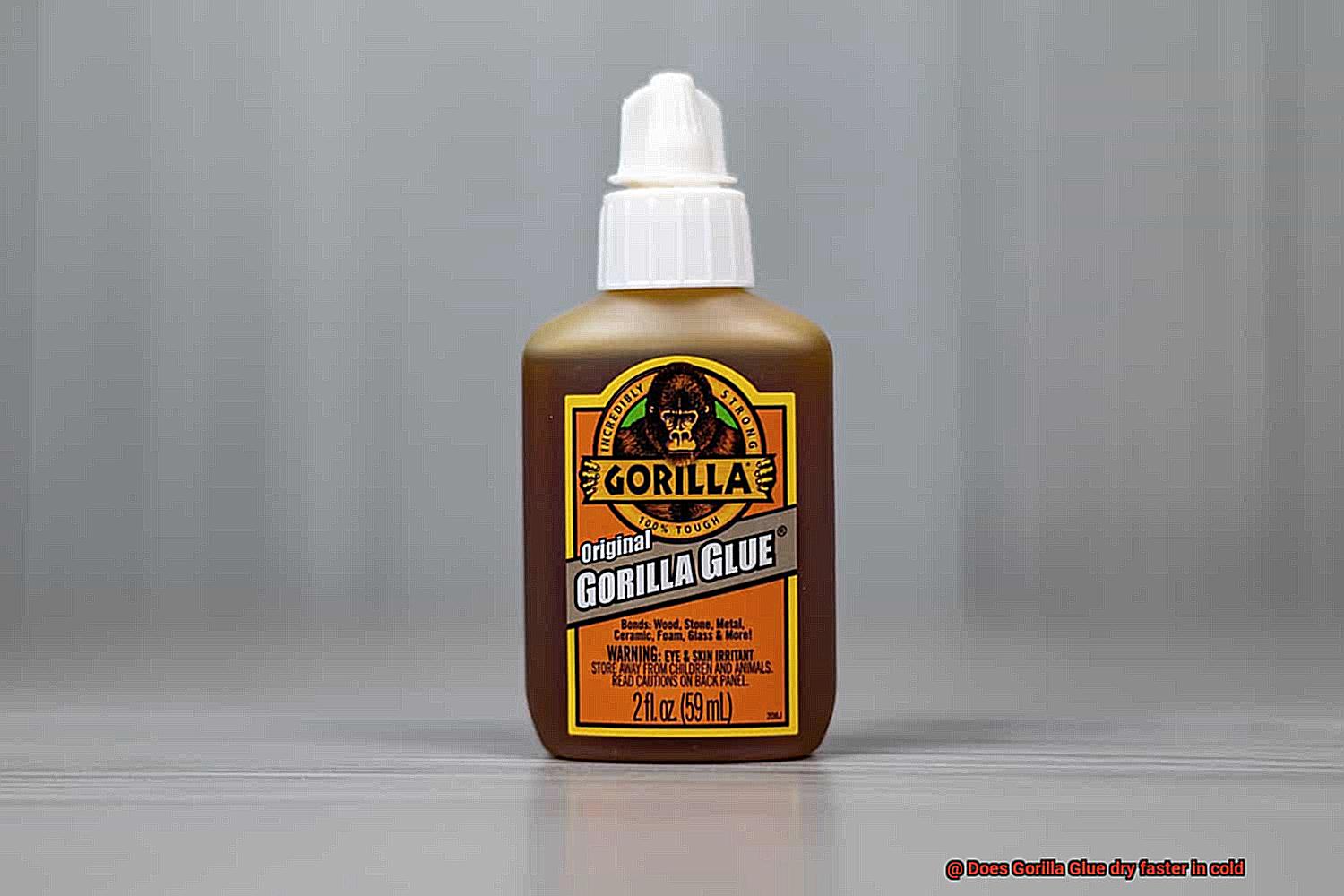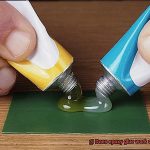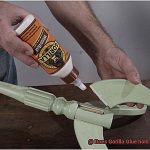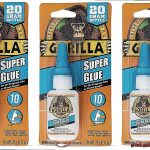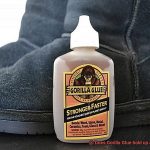Are you a DIY enthusiast who values quality work but also wants to get things done quickly? Look no further than Gorilla Glue, a popular adhesive known for its strong and lasting hold. But with temperature affecting the drying time of adhesives, many wonder if Gorilla Glue dries faster in cold temperatures.
In this blog post, we’ll debunk the myth and explore the factors that impact Gorilla Glue’s drying time. Whether you’re tackling a small home improvement project or a larger DIY endeavor, understanding how to best use Gorilla Glue will ensure your success.
So, let’s dive in and discover the truth about whether Gorilla Glue dries faster in cold temperatures.
What is Gorilla Glue?
Contents
When it comes to finding an adhesive that can tackle any job, Gorilla Glue is the answer. This polyurethane-based adhesive was first introduced to the market in 1999 and has since become a popular alternative to traditional adhesives like superglue or epoxy. What sets Gorilla Glue apart is its ability to bond different materials, including wood, metal, ceramic, and plastic.
One of the unique characteristics of Gorilla Glue is that it expands as it dries. This expansion helps to fill any gaps or spaces between surfaces, resulting in a stronger bond. However, for this feature to work properly, the surfaces must be slightly damp before applying the glue. This ensures that the chemical reaction between the glue and moisture can take place.
Gorilla Glue also sets quickly, with initial bonding taking place within 10-20 minutes of application. After that, it takes up to 24 hours for the glue to fully cure and reach its maximum strength. This curing time can vary depending on several factors such as temperature, humidity level, and type of material being bonded.
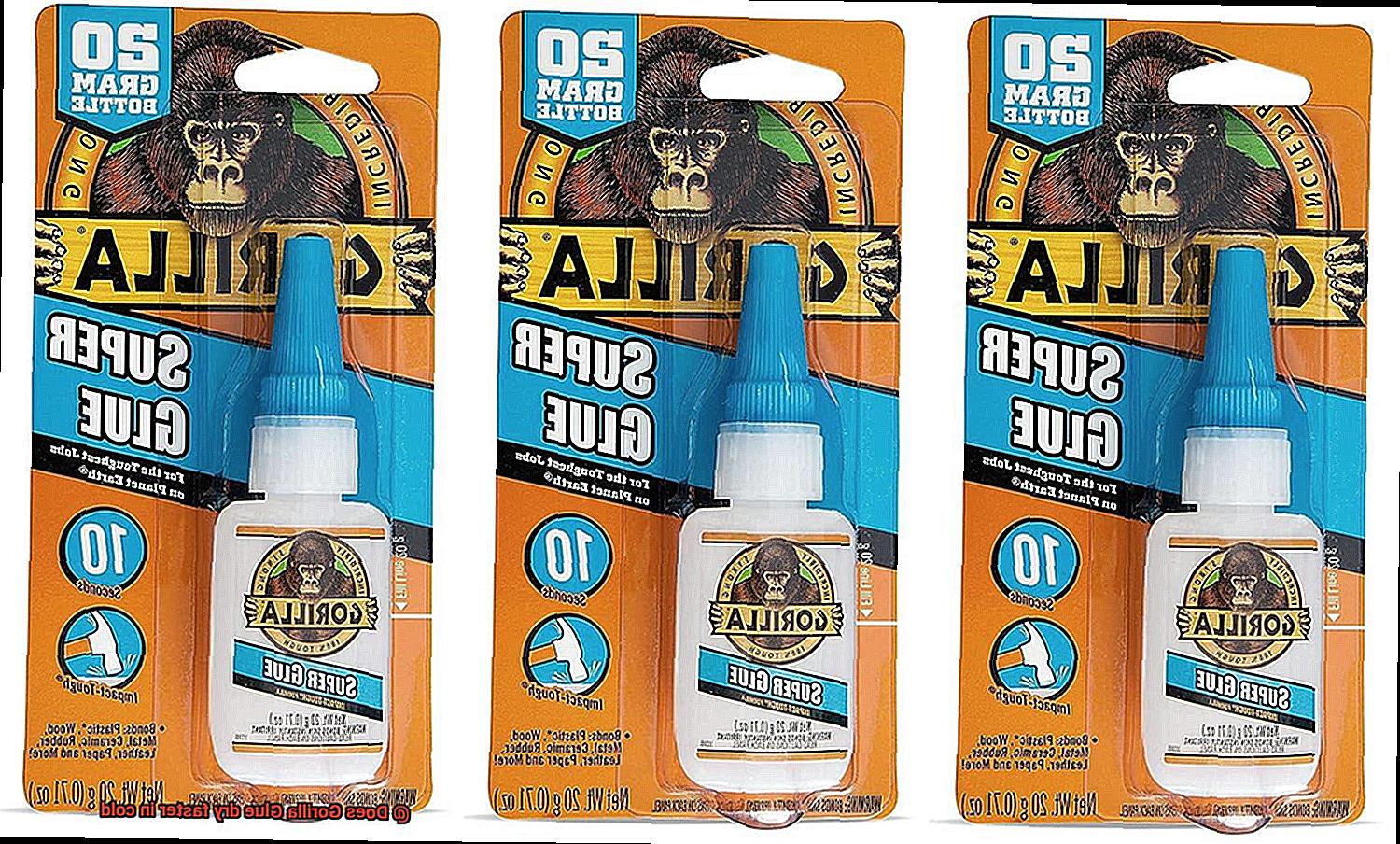
To ensure that Gorilla Glue works effectively, it’s important to use it within the recommended temperature range of 68-130°F (20-55°C). Temperatures outside of this range may affect the glue’s ability to bond properly and may result in a weaker hold. While Gorilla Glue can still be used in colder temperatures, it may take longer to fully cure and achieve maximum strength.
Does Gorilla Glue Dry Faster in Cold Temperatures?
Before you grab that Gorilla Glue, let’s explore whether it dries faster in cold temperatures.
Firstly, several factors such as temperature, humidity, and glue application amount can affect the drying time of Gorilla Glue. However, when it comes to cold temperatures, the air is drier, which means there is less moisture available for the glue to cure. As a result, Gorilla Glue may take longer to dry due to its chemical properties. It is a polyurethane-based adhesive that requires moisture to cure properly.
Moreover, the viscosity of Gorilla Glue can be affected by cold temperatures. When the temperature drops, the glue may become thicker and harder to apply. This can lead to uneven coverage and longer drying times.
But before you give up on using Gorilla Glue in colder conditions, there is good news. Proper technique can help you get optimal results. One technique is to warm up the glue before use by placing it in a warm room or using a hairdryer on low heat. By doing so, the glue will thin out, making it easier to apply and increasing its performance in colder conditions.
Why Cold Temperature Slows Down the Drying Process
As an expert on this topic, I can explain why cold temperature slows down the drying process of Gorilla Glue.

Firstly, let’s discuss evaporation, the scientific principle behind drying. Evaporation is the process by which a liquid turns into a gas or vapor. The rate of evaporation depends on various factors, including temperature, humidity, and air movement. When the temperature drops, the molecules in the glue move slower, reducing the rate of evaporation.
But wait, there’s more. Gorilla Glue is a polyurethane-based adhesive that requires moisture to activate and cure. The glue expands as it cures, filling any gaps in the surface it is applied to and creating a strong bond. However, if the temperature is too low, the glue won’t cure properly, resulting in a weaker bond.
The humidity levels also play a significant role in the drying process of Gorilla Glue. High humidity slows down the drying process, while low humidity speeds it up. Moisture in the air affects the rate of evaporation, so too much moisture will take longer for the glue to dry.
To ensure your Gorilla Glue dries correctly during cold weather conditions, there are specific measures you can take. Keep it at room temperature (around 70 degrees Fahrenheit) and in a dry environment. If you need to apply it in colder temperatures, warm up the glue beforehand to thin it out for optimal performance.
How to Use Gorilla Glue in Colder Environments
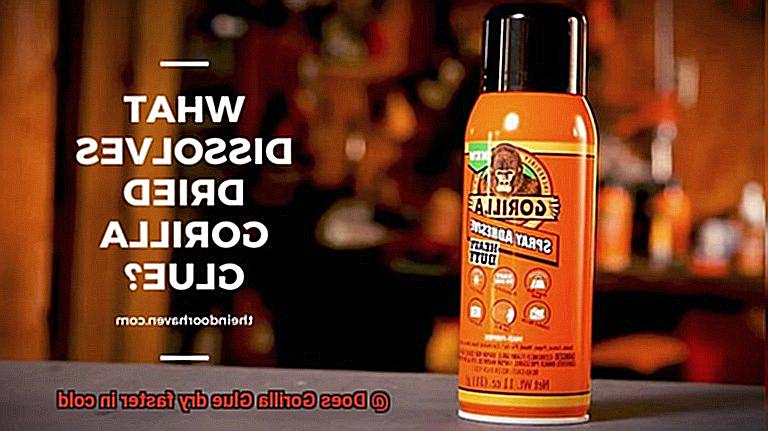
Using Gorilla Glue in colder environments can be challenging, but it’s not impossible to achieve a strong and reliable bond. Here are some tips and tricks to help you get the best results:
Warm up the glue before use. Gorilla Glue works best at room temperature, so store the glue in a warm area prior to use. This will prevent it from thickening and becoming difficult to work with.
Warm up the surfaces being bonded. Using a hairdryer or heat gun, gently warm up the surfaces being bonded before applying the glue. This helps the glue set more quickly and effectively.
Apply a small amount of moisture to one of the surfaces being bonded. This can help activate the glue’s curing process and speed up its drying time. However, be careful not to add too much moisture as this can affect the strength of the bond.
Be patient. The curing process may take longer in colder temperatures, so allow extra time for the glue to dry and set before handling the bonded objects. Avoid disturbing or moving them until you’re sure the glue has fully cured.
Work in a temperature range of 50-77 degrees Fahrenheit for best results. While warmer temperatures can help the glue set more quickly, extreme heat can actually cause the glue to expand and create a messy and ineffective bond.
The Ideal Temperature for Using Gorilla Glue
Gorilla Glue is a polyurethane-based adhesive known for its incredible bonding properties. However, using it at the wrong temperature can result in weaker bonds and longer drying times. That’s why understanding the ideal temperature range for using Gorilla Glue is crucial to achieve the best results.
So, what is the ideal temperature for using Gorilla Glue? It’s between 70°F and 80°F (21°C and 27°C). Here’s why:
- Slower curing process at low temperatures: At temperatures below 60°F (15°C), the curing process of Gorilla Glue can be significantly slowed down. This can lead to weaker bonds and longer drying times, which can be frustrating and time-consuming.
- Quick drying at high temperatures: On the other hand, at temperatures above 80°F (27°C), the glue can dry too quickly. This can also weaken the bond, leaving you with a sub-optimal outcome.
- Temperature recommendations vary by type: Different types of Gorilla Glue are designed to work better at specific temperature ranges. Therefore, it’s essential to read the label for specific temperature recommendations and follow them carefully.
In addition to following the recommended temperature range, here are some tips to keep in mind:
- Keep the glue at room temperature before use: When you’re ready to use your Gorilla Glue, make sure it’s at room temperature. This will help ensure optimal performance.
- Avoid exposing it to extreme temperatures or humidity: Extreme temperatures or humidity can affect the performance of Gorilla Glue. So store it in a cool, dry place away from direct sunlight or heat sources.
By understanding the ideal temperature range for using Gorilla Glue and following these handling instructions carefully, you can achieve strong bonds and optimal performance from your Gorilla Glue.
Steps to Warmer Up Surfaces Before Applying Adhesive
Warming up your surfaces before applying adhesive can help ensure optimal performance. As an expert on this subject, I’m here to guide you through the essential steps to warm up surfaces for a successful bonding experience.
Step 1: Clean and Dry the Surface
Before warming up any surface, it’s crucial to ensure that it’s clean and dry. This step ensures that the surface is free from debris and moisture, allowing for a stronger bond. A clean cloth or paper towel can be used to wipe down the surface and let it air dry.
Step 2: Heat Gun or Hairdryer
The quickest way to warm up surfaces is by using a heat gun or hairdryer. Hold the heat gun or hairdryer several inches away from the surface and move it evenly across the area. It’s crucial to be careful not to overheat the surface, as this can cause damage or warping. The surface only needs to be heated enough to make it warm to the touch.
Step 3: Warm Water
If you don’t have a heat gun or hairdryer, warm water can also do the trick. Soak a cloth in warm water and wring out any excess water before placing it on the surface for a few minutes. The warm water will help raise the surface temperature, making it easier for adhesive to bond.
Step 4: Heating Pad
Another option is to use a heating pad. Place it on the surface for a few minutes until it becomes warm. This method is ideal for larger surfaces where a heat gun or hairdryer would be impractical.
It’s important to note that using an open flame to warm up surfaces should be avoided as this can cause damage or create a fire hazard. Additionally, when working with delicate surfaces such as plastic or thin metal, extra care should be taken when warming them up as they can melt or warp easily.
ggekRdoQJNE” >
Also Read: How to Make Glue Dry Faster
Conclusion
To sum up, Gorilla Glue is a highly versatile adhesive that can bond a variety of materials and create a robust and durable hold. However, its drying time can be impacted by several factors such as temperature, humidity level, and the type of material being bonded. While it is recommended to use Gorilla Glue within the temperature range of 68-130°F (20-55°C), it can still be utilized in colder temperatures with proper technique.
It’s a common misconception that Gorilla Glue dries faster in cold temperatures. However, this is not the case since lower temperatures mean less moisture available for the glue to cure correctly. Moreover, cold temperatures can cause the viscosity of Gorilla Glue to thicken, making it challenging to apply.
To ensure optimal performance in colder environments, it’s crucial to warm up both the glue and surfaces before application. You may use a heat gun or hairdryer or soak them in warm water to increase their temperature and make them easier to bond with adhesive.
By understanding the ideal temperature range for using Gorilla Glue (between 70°F and 80°F) and following specific handling instructions carefully, you can achieve strong bonds and optimal performance from this powerful adhesive.

